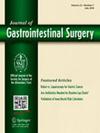Anatomical insights into Rouviere’s Sulcus through the Glissonean approach in minimally invasive right-sided sepatectomy
IF 2.2
3区 医学
Q3 GASTROENTEROLOGY & HEPATOLOGY
引用次数: 0
Abstract
Background
Understanding the liver anatomy, particularly the Rouviere sulcus (RS), is crucial for safely performing cholecystectomy and hepatectomy. As surgical interest in right-sided hepatectomies using the Glissonean pedicle approach has increased, a thorough understanding of the RS anatomy is becoming increasingly important. This study aimed to investigate the presence and anatomical contents of the RS during right-sided hepatectomy and to develop a preoperative assessment method to improve surgical safety and precision.
Methods
Patients who underwent laparoscopic or robotic right-sided hepatectomy with RS dissection were included in the study. The RS was categorized into open and closed types, and its contents were examined to identify the presence of Glissonean pedicles. The findings were compared with simulations generated from 3-dimensional reconstruction imaging for further analysis.
Results
Of the 83 patients, 62 (74.7%) had open-type RS, and 21 (25.3%) had closed-type RS. Among the open-type RS cases, 38 patients (61.3%) involved the right posterior Glissonean pedicle within the RS, whereas 19 patients (30.7%) involved segment 6 Glissonean pedicle. Preoperative imaging revealed that when the right posterior Glissonean pedicle did not form a common trunk with segments 6 and 7, the Glissonean pedicle of segment 6 was located within the RS. The variation observed in 5 cases (8.1%) with the right main Glissonean pedicle in the RS was significant and should be carefully considered during surgery.
Conclusion
A thorough understanding of the RS anatomy is essential for safe and precise right-sided hepatectomy. Our findings emphasize the variability of RS, particularly concerning the presence of different Glissonean pedicles, including the right posterior segment 6 and, in rare cases, the right main Glissonean pedicle. Our findings highlight the necessity for individualized preoperative imaging and careful consideration of anatomical variations to minimize complications during right-sided hepatectomy.

求助全文
约1分钟内获得全文
求助全文
来源期刊
CiteScore
5.50
自引率
3.10%
发文量
319
审稿时长
2 months
期刊介绍:
The Journal of Gastrointestinal Surgery is a scholarly, peer-reviewed journal that updates the surgeon on the latest developments in gastrointestinal surgery. The journal includes original articles on surgery of the digestive tract; gastrointestinal images; "How I Do It" articles, subject reviews, book reports, editorial columns, the SSAT Presidential Address, articles by a guest orator, symposia, letters, results of conferences and more. This is the official publication of the Society for Surgery of the Alimentary Tract. The journal functions as an outstanding forum for continuing education in surgery and diseases of the gastrointestinal tract.

 求助内容:
求助内容: 应助结果提醒方式:
应助结果提醒方式:


